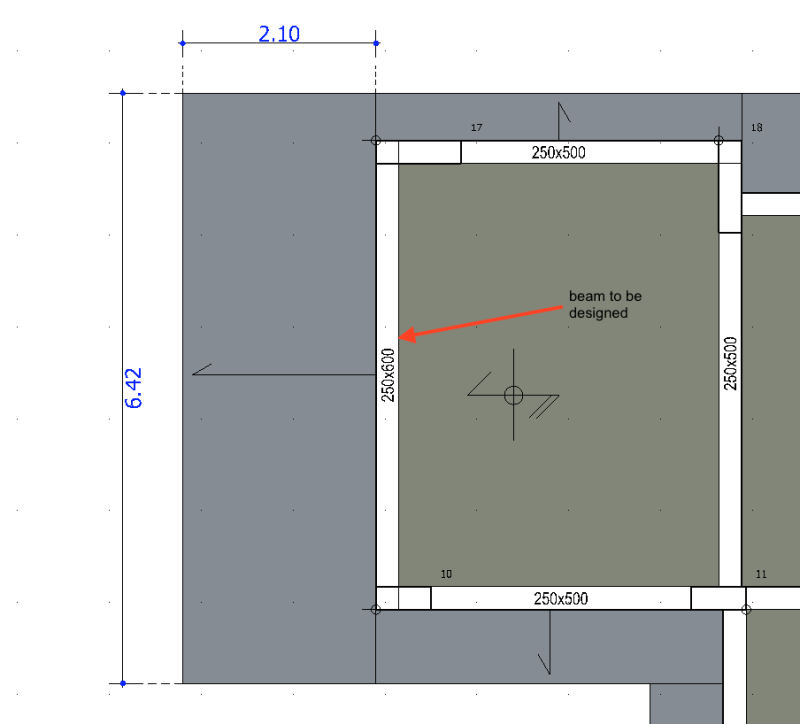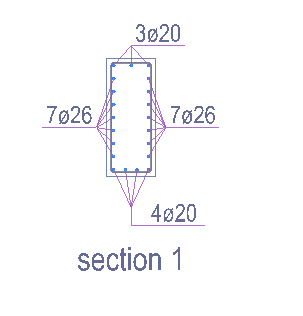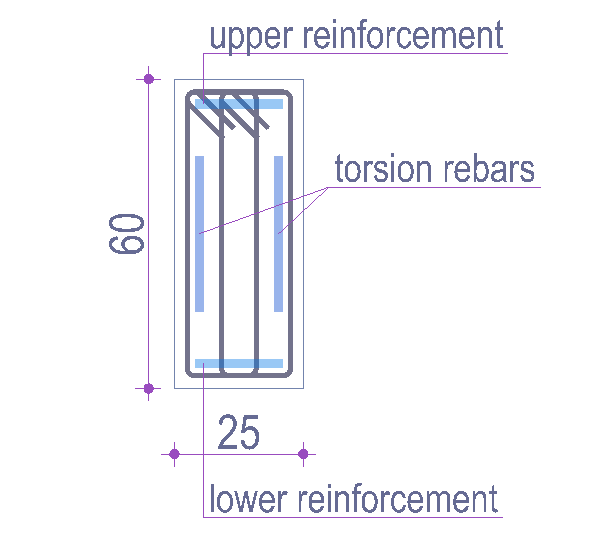kellez
Civil/Environmental
- Nov 5, 2011
- 276
Hello everyone,
I am trying to design a 2.10m x 6.42m cantilever slab (200mm thick) and the accompanying beam (section: 250x600mm, clear span: 4.60)
that would have to carry the load in order to keep the slab standing.
My initial observation is that its impossible to design the beam reinforcement.
I kept increasing the reinforcement just to observe but it still fails under "Composite Shear-Torsion verification".
Currently i have 14fi26 for torsion and 7fi20 for bending which is overkill I also have 10mm stirrups with four bars resisting shear.



Therefore now i am trying to think of ways to reduce the torsion transferred to the beam by the cantilever slab?
1. My first thought is to use wide shallow beams that extend from the end of the interior slab across the two outer
columns up to the end of the cantilever slab. in this way i can transfer some of the load directly to the columns
and relief some of the load from the beam. (see image below)
2. My next thought is to design the beam as an inverse L-shaped beam therefore adding a a bit more of torsional resistance.
which basically means inserting a shallow beam directly on top of the existing beam which would be embedded within the column
allowing for greater torsional resistance. Again this allows to involve the column more in directly resisting the load from the slab.
(see image below)
3. One more thought is if I am actually modelling this correctly in regards to the torsion transfer from the slab to beam. My question is,
shall i reduce the torsion transfer to the beam or shall i leave it at 100%
What are your thoughts on the above solutions and could you suggest any more solutions to address this issue?
Regards
SUGGESTED DESIGN

I am trying to design a 2.10m x 6.42m cantilever slab (200mm thick) and the accompanying beam (section: 250x600mm, clear span: 4.60)
that would have to carry the load in order to keep the slab standing.
My initial observation is that its impossible to design the beam reinforcement.
I kept increasing the reinforcement just to observe but it still fails under "Composite Shear-Torsion verification".
Currently i have 14fi26 for torsion and 7fi20 for bending which is overkill I also have 10mm stirrups with four bars resisting shear.



Therefore now i am trying to think of ways to reduce the torsion transferred to the beam by the cantilever slab?
1. My first thought is to use wide shallow beams that extend from the end of the interior slab across the two outer
columns up to the end of the cantilever slab. in this way i can transfer some of the load directly to the columns
and relief some of the load from the beam. (see image below)
2. My next thought is to design the beam as an inverse L-shaped beam therefore adding a a bit more of torsional resistance.
which basically means inserting a shallow beam directly on top of the existing beam which would be embedded within the column
allowing for greater torsional resistance. Again this allows to involve the column more in directly resisting the load from the slab.
(see image below)
3. One more thought is if I am actually modelling this correctly in regards to the torsion transfer from the slab to beam. My question is,
shall i reduce the torsion transfer to the beam or shall i leave it at 100%
What are your thoughts on the above solutions and could you suggest any more solutions to address this issue?
Regards
SUGGESTED DESIGN

